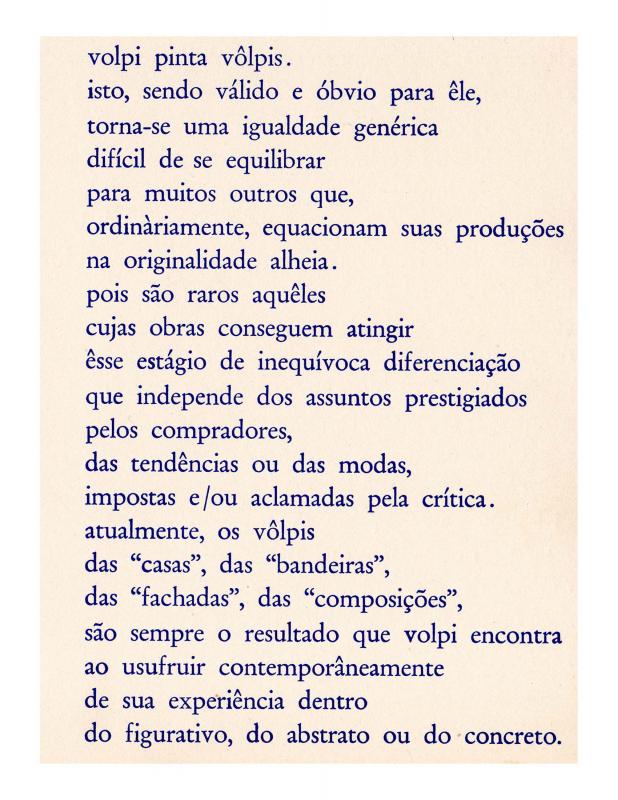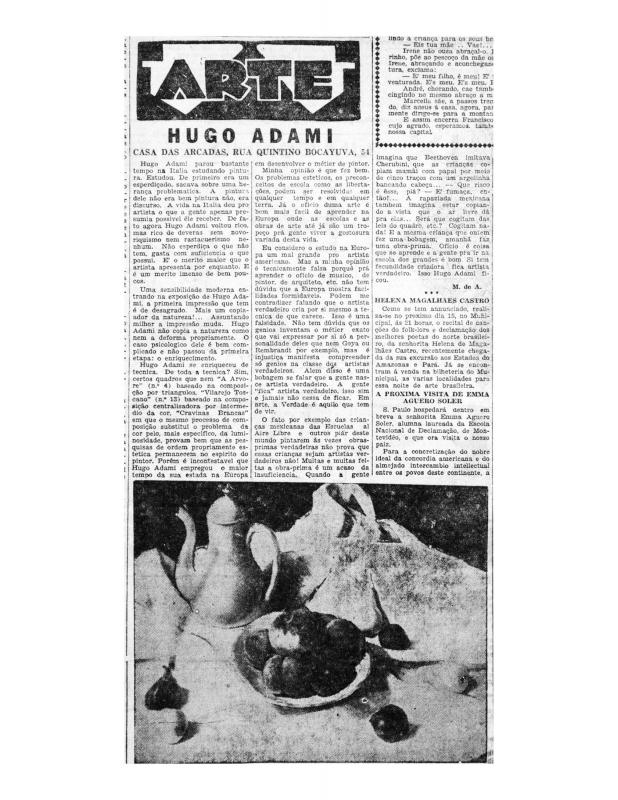This retrospective outlines the entire art life of the painter Alfredo Volpi, emphasizing above all his intrinsic values (pictorial, chromatic, and formal). The exhibition in question had the title Volpi: 90 anos,and was held from July 23 to August 20, 1986, at the Museu de Arte Moderna de São Paulo (MAM-SP). It was curated by the writer of this article, Olívio Tavares de Araújo.
Alfredo Volpi (1896−1988), the painter born in Italy and living in Brazil, began his art life in the 1920s, when he rendered all his work in a figurative language. Three decades later, in the 1950s, he made forays into geometric abstract art and even came to participate in the Iª Exposição Nacional de Arte Concreta, first in São Paulo (1956), and the following year in Rio de Janeiro. While Volpi’s work did not fit within the parameters of Concrete art, his painting was admired for all its detail (not to mention, celebrated) by the artists and poets tied to that movement.
Olívio Tavares de Araújo is a journalist and art critic. During the 1960s, he wrote an art column for the daily newspaper Estado de Minas; in the 1970s, he wrote about art for Veja, a publication with a large national circulation. He has published some books and also made some films as well as organizing exhibitions of work created by Brazilian artists.
As readings to supplement this document, there is a text by the visual artist Willys de Castro, which coined the specific description “Volpi pinta vôlpis” [doc. no. 1090193]. In that text, the writer emphasizes that the content of Volpi’s paintings results from the independence of his own pictorial investigations. In a general article on the painter’s origins, Mário de Andrade wrote about the Família Artística Paulista (FAP), to which Volpi belonged before he was part of the Grupo Santa Helena, in “Hugo Adami” [doc. no. 783916]; Lourival Gomes Machado also wrote about another painter in the [Santa Helena] group, “Rebolo” [doc. no. 1091476].



